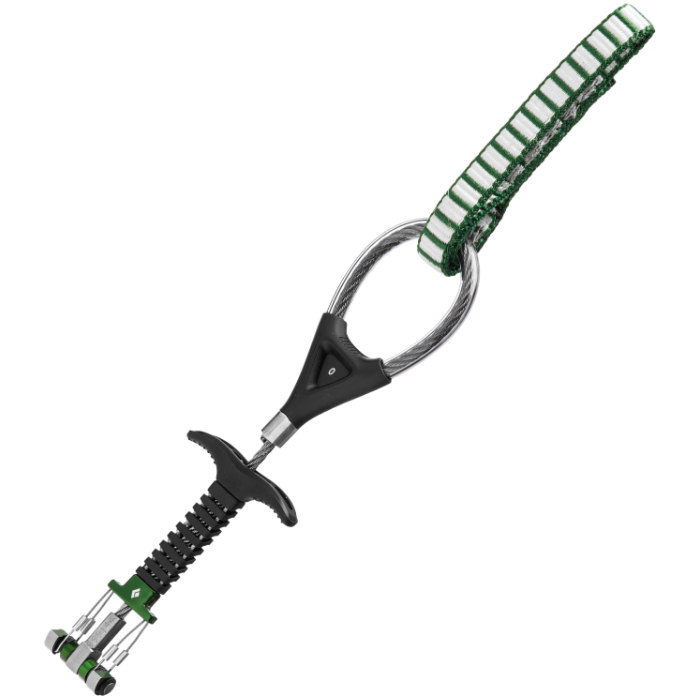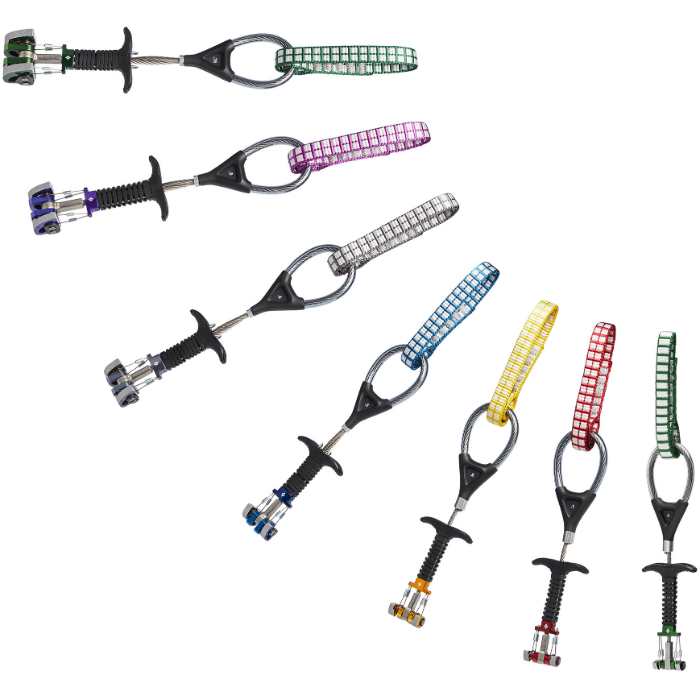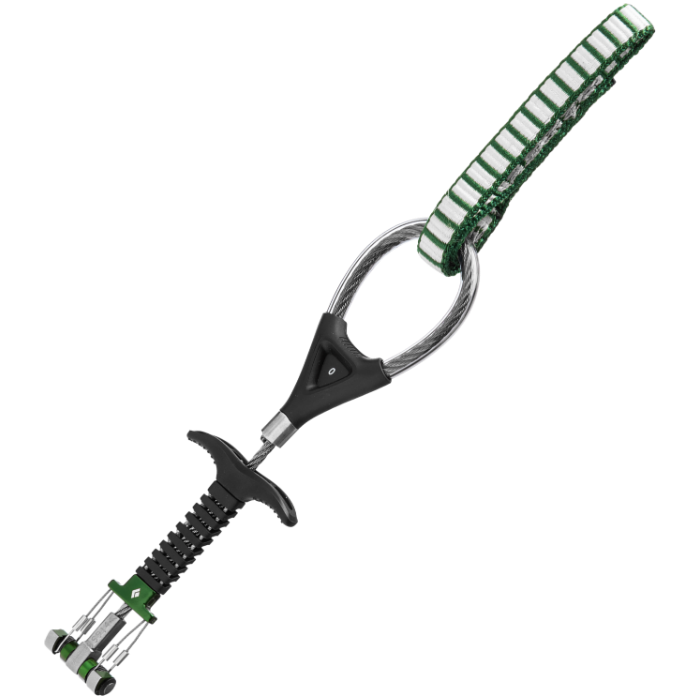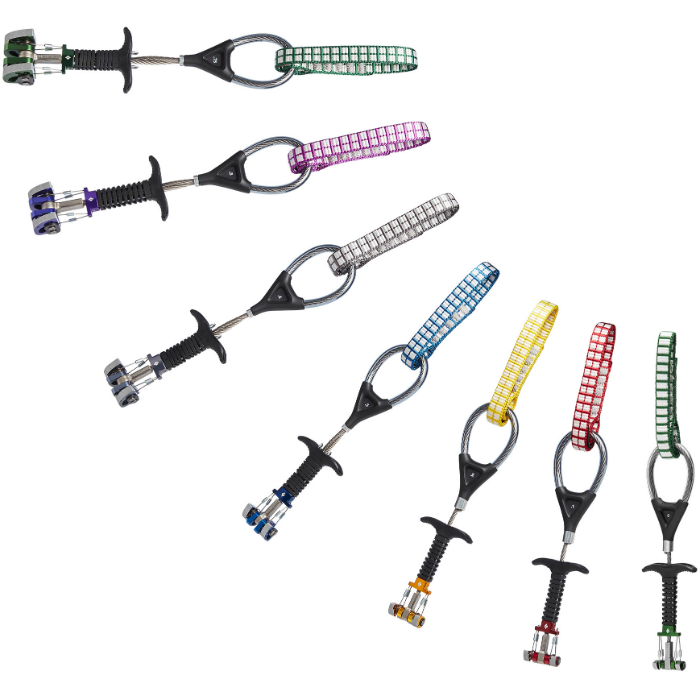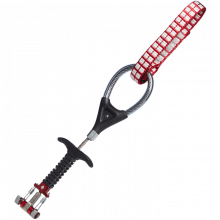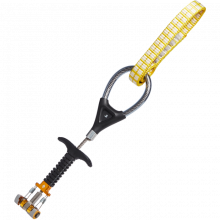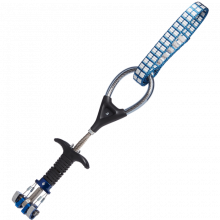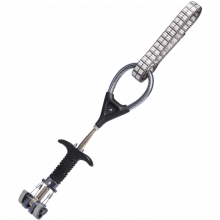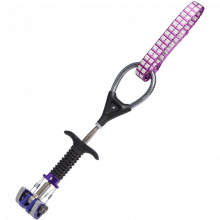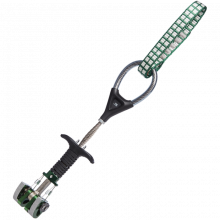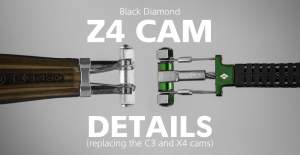Camalot Z4 0
Description
Born from a heart-to-heart with our top trad-climbing BD athletes Hazel Findlay, Carlo Traversi, Sam Elias, and Babsi Zangerl, the Camalot Z4 is the realization of a dream: to have a single-stem cam that stays rigid in-hand, but flexes once placed. Behold--the patent-pending Rigid-Flex stem. Thanks to the independently floating trigger wires the Camalot Z4 doesn't bend while under tension and retracted, but once placed allows the stem to move, ensuring a palcement that stays put and doesn't walk when pulled directionally. The stem on the larger sizes also utilizes dual twisted cable construction which provides uniform flex in all directions, while single cable construction is implemented on smaller sizes to avoid buckling when pulling hard on the trigger and to reduce trigger profile. Featuring a similar head-width as our old Camalot C3 design, but with 4 lobes that are sandblasted for better holding power, the Z4's are not only an upgrade, but are also available is smaller sizes--starting from #0, our smallest cam ever made, and ranging to .75, allowing you to dial in the rack, whether you're gunning for a tips crack in the desert, or going light and fast in the bugs.
Features
- RigidFlex stem stays rigid in-hand for easy placement, but flexes once placed to reduce walking
- Dual twisted cable construction on larger sizes provides uniform flex; single cable construction on smaller sizes avoids buckling and reduces trigger profile
- Narrow head width for tight placements
- Sandblasted lobes provide holding power
- Lightweight yet durable Dynex™ sling with a unique color scheme for easy identification from other Camalots
Retail price
When you click a link below and then checkout online, no matter what you buy (climbing gear or not), we get a small commission that helps us keep this site up-to-date. Thanks!




Weight (g / oz)  Weight (g / oz)In grams and ounces, the weight, as stated by the manufacturer/brand. | 43.0 g / 1.51 oz |
| Cam Head | 4 lobes, single axle |
| Offset | No offset |
| Stem | Flexible single stem |
| Sling | Dyneema (single sling loop) |
| Camming Angle | |
| Active Strength | 5 kN |
Cam Range (mm / in)  Cam Range (mm / in)In millimeters and inches, the maximum dimensions of the cam lobes when shut tight and fully extended. Since the "usable" range is so debatable, all manufacturers now list the full dimensions to avoid selling themselves short. For offset cams, we'll list the max dimensions possible and then afterwards list each of lobe dimensions. | 7.5 - 11.8 mm (0.29 - 0.46 in) |
| Materials | |
| Certification | |
Black Diamond Z4s present an upgrade over previous versions by unleashing new and innovative technology while also addressing the concerns raised by both athletes and consumers. These are some high tech gadgets that are simple and easy to use, and are easily among the most versatile small camming units you can buy. We think both new and experienced climbers alike will appreciate having them on their rack, and will benefit from their many advantages over other small cam designs.
With grippy, sandblasted lobes and a narrow head width, the four-lobed Z4s sunk reliably deep in thin fissures and pin scars. But their most epic feature was the new RigidFlex tech, an accordion sheathe that stiffens the stem when retracted to let you bury the unit, but then softens up once placed to reduce walking. Our tester dug the Z4 Offsets for irregular cracks, saying, “I whipped repeatedly on the .3/.4. It took a beating, but showed little wear and was easy to clean. Highly recommend the Offset Z4s for aid and alpine adventures with flaring granite cracks.”
The UIAA equipment standard provides a baseline for equipment performance in a test lab under controlled conditions on new equipment. Although these test conditions are relevant to the conditions encountered climbing, conditions encountered at the crags and the condition of the equipment are equally important. This recommendation from the UIAA member federation The British Mountaineering Council (BMC) provides vital equipment information that is NOT explicitly addressed in the standard, particularly failure modes of the equipment and recommendations for the use, inspection, maintenance, and retirement of equipment.
A pictoral representation of the UIAA-125 and EN-12276 standards for frictional anchors (which includes SLCD's [cams] and Ballnuts).

